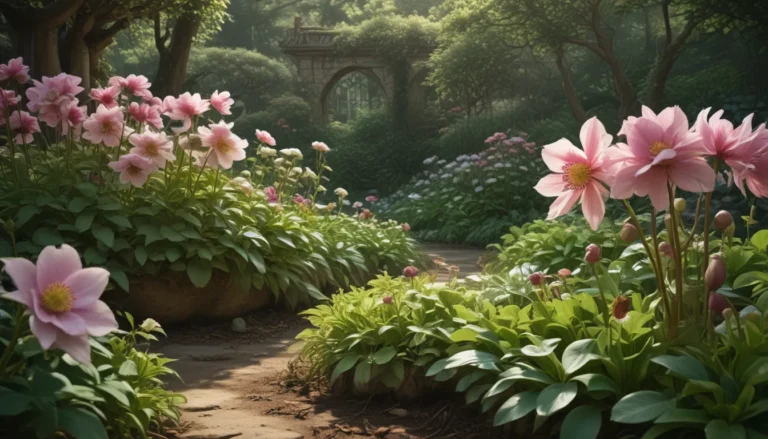How to Properly Fertilize Daffodils for a Vibrant Spring Display

If you’re a gardening enthusiast like me, you probably can’t wait for the sight of daffodils blooming in your garden. These bright yellow flowers are a sure sign that spring has arrived. With their trumpet-like petals, daffodils add a splash of color to the early spring landscape.
Daffodils, also known as Narcissus, are hardy bulbs that thrive in USDA Hardiness Zones 3 to 9. They are among the first flowers to emerge from the snow-covered ground, along with other early bloomers like crocuses and snowdrops.
In this comprehensive guide, we’ll delve into the world of daffodil care, focusing specifically on one crucial aspect – fertilizing your daffodil bulbs. By the end of this article, you’ll have all the information you need to ensure your daffodils thrive and produce stunning blooms.
Understanding Daffodils
Before we dive into the specifics of fertilizing daffodils, let’s take a closer look at these beautiful flowers. Daffodils are tunicate bulbs, meaning they have a protective papery covering. These self-contained packages of plant tissue are designed to burst forth with energy, sprouting foliage and blossoms in the spring.
Planting daffodils in the fall provides them with the chilling period they need to bloom when spring arrives. These bulbs are ideally planted at a depth that is two to three times their height to prevent heaving and provide insulation from temperature fluctuations.
Daffodils require a sunny to partly shaded location with well-draining, slightly acidic soil. They are not heavy feeders but still need essential nutrients like nitrogen, phosphorus, and potassium for healthy growth.
To Fertilize or Not to Fertilize
When it comes to fertilizing daffodils, the key question is whether you should apply fertilizer to these bulbs. While daffodil bulbs purchased in the fall come preloaded with the nutrients they need to bloom, the soil’s quality can deteriorate over time.
To rejuvenate the soil and ensure healthy growth, consider adding organic amendments like compost or worm castings. Alternatively, you can opt for organic or chemical fertilizers to provide essential nutrients to the bulbs and roots.
Fertilizing daffodils offers several benefits, including supporting root growth, improving soil structure, and augmenting soil nutrients. Whether you choose soluble or insoluble fertilizers, the goal is to provide the bulbs with the nutrients they need to thrive.
Choosing the Right Fertilizer
When selecting a fertilizer for your daffodils, consider whether you prefer a soluble or insoluble product. Soluble fertilizers release nutrients quickly, while insoluble granular fertilizers provide slow-release nutrition over time.
For optimal results, consider using a well-balanced 10-10-10 fertilizer containing equal amounts of nitrogen, phosphorus, and potassium. This balanced formulation ensures that your daffodils receive the essential nutrients they need for healthy growth and vibrant blooms.
If you’re unsure about the nutrient composition of your soil, consider adding phosphorus-rich bone meal to provide root support. However, it’s essential to use bone meal sparingly to avoid attracting rodents and ensure optimal plant growth.
How to Apply Fertilizer
When it comes to fertilizing daffodils, proper application is key to avoiding damage to the bulbs and promoting healthy growth. Whether you’re fertilizing at planting time or during the growing season, follow these tips for optimal results:
- Protect the bulbs: When applying granular fertilizer at planting time, ensure that the bulbs don’t come into direct contact with the product to prevent burning.
- Feed mature daffodils: For established bulbs, top-dress the soil around the shoots with fertilizer, taking care not to let the product touch the foliage.
- Use a slow-release product: Consider using a slow-release granular fertilizer like Espoma Organic Bulb-Tone, which provides essential nutrients without burning the plants.
By following these feeding tips, you can ensure that your daffodils receive the nutrients they need to flourish and bloom beautifully.
Feed Your Daffodils in Moderation
Finally, remember that when it comes to fertilizing daffodils, less is often more. Daffodils are self-sufficient bulbs that don’t require excessive feeding. Using fertilizer judiciously can help avoid overfeeding, which can lead to excessive foliar growth and fewer flowers.
By following these guidelines and providing your daffodils with the right nutrients at the right time, you can enjoy a vibrant spring display of colorful blooms. With proper care and attention to their nutritional needs, your daffodils are sure to add cheer to your garden each year.
In conclusion, daffodils are a delightful addition to any garden, bringing a burst of color and beauty to the early spring landscape. By understanding their nutritional requirements and providing them with the right nutrients, you can ensure that your daffodils thrive and produce stunning blooms year after year.
Get ready for a sensational spring display by fertilizing your daffodils and watching them come to life in your garden. Share your experiences and tips for growing daffodils in the comments below – we’d love to hear from you!
If you found this guide informative and want to learn more about growing daffodils, be sure to check out our other articles on daffodil care, including reasons why your daffodils may not be blooming and the best companion plants to pair with daffodils.





